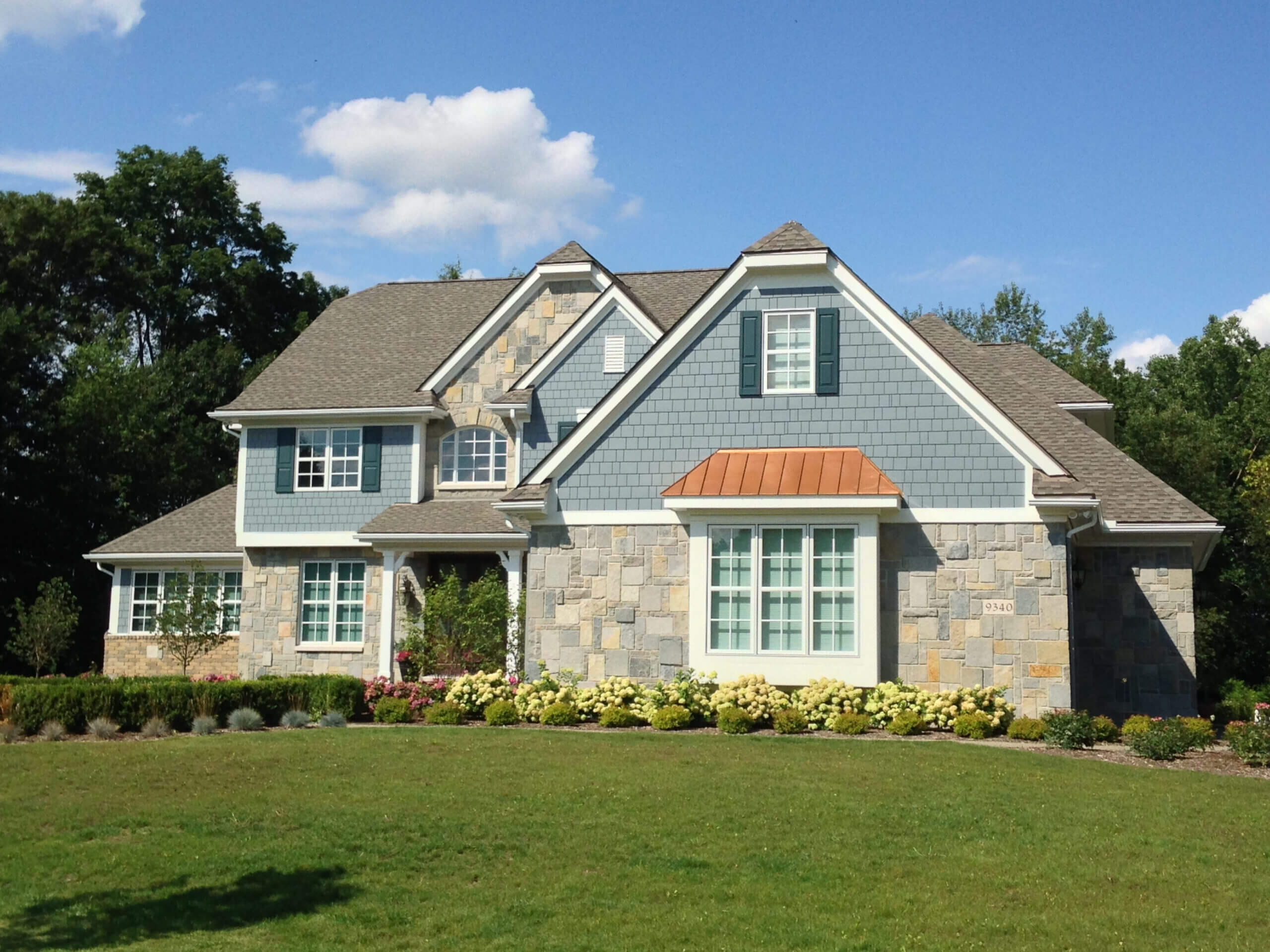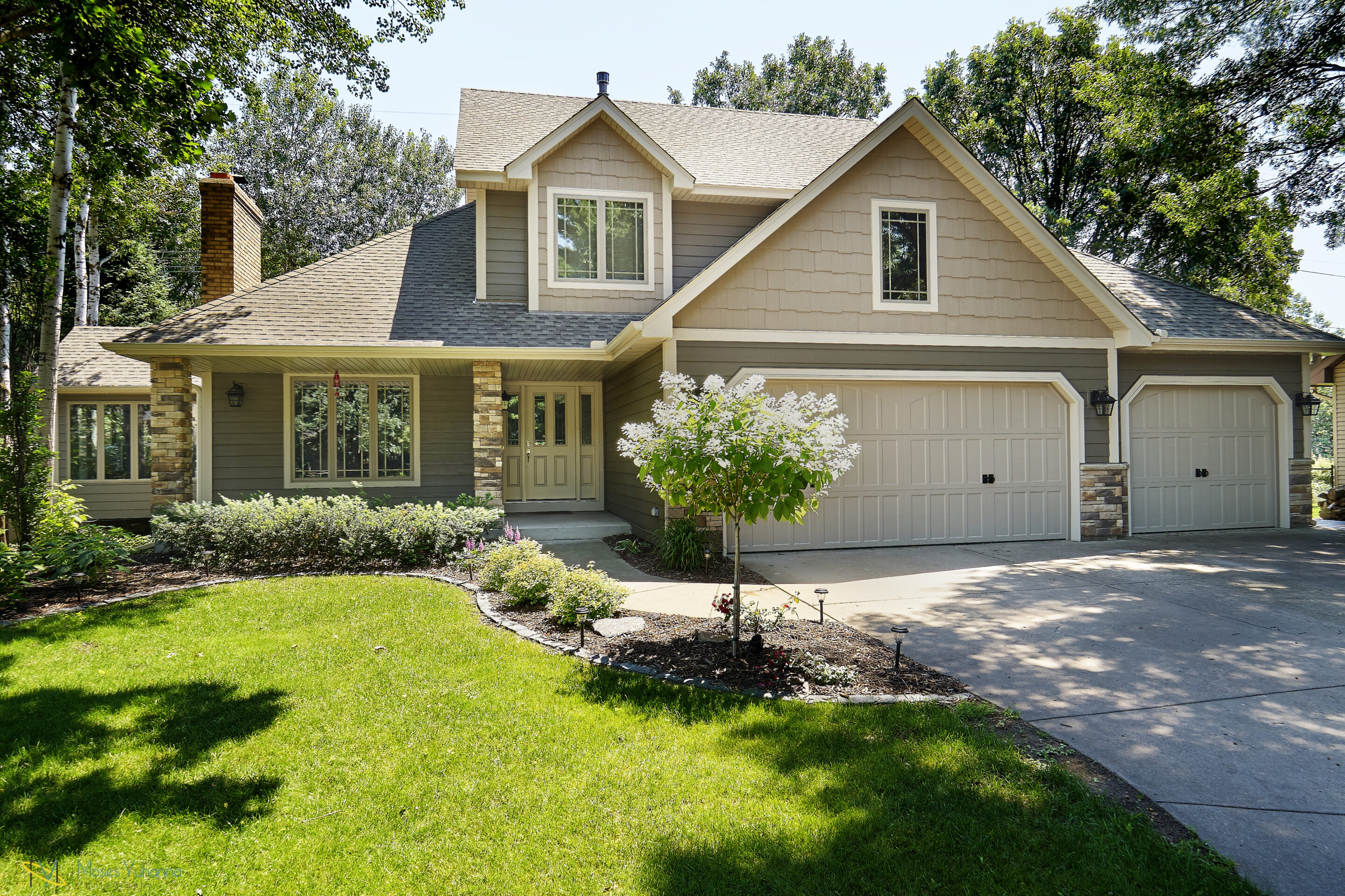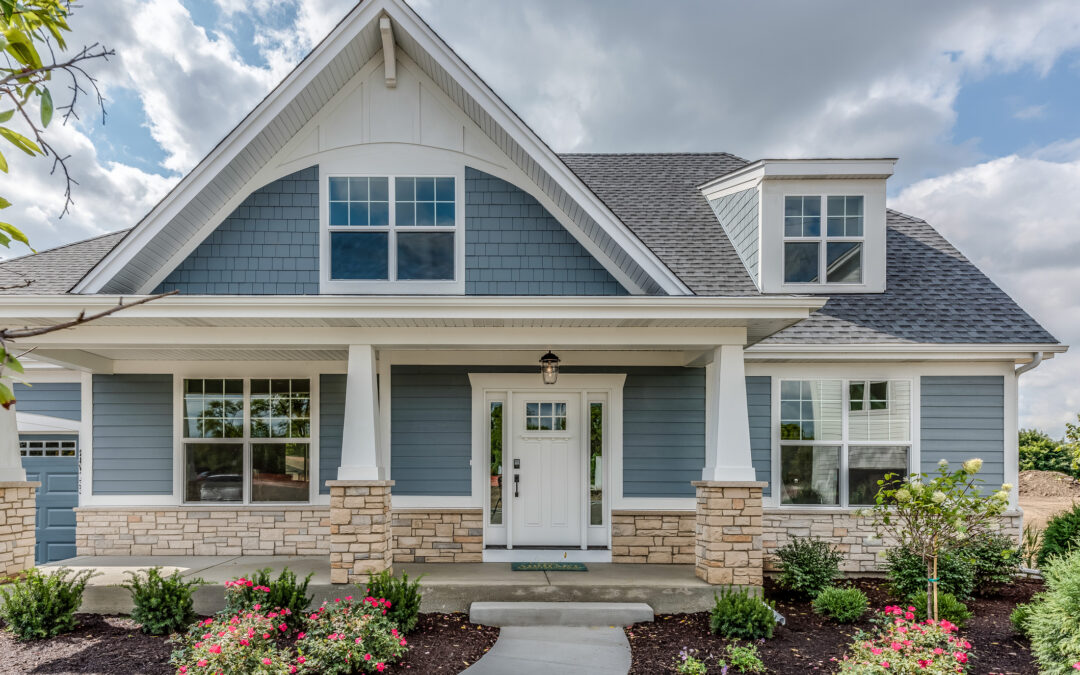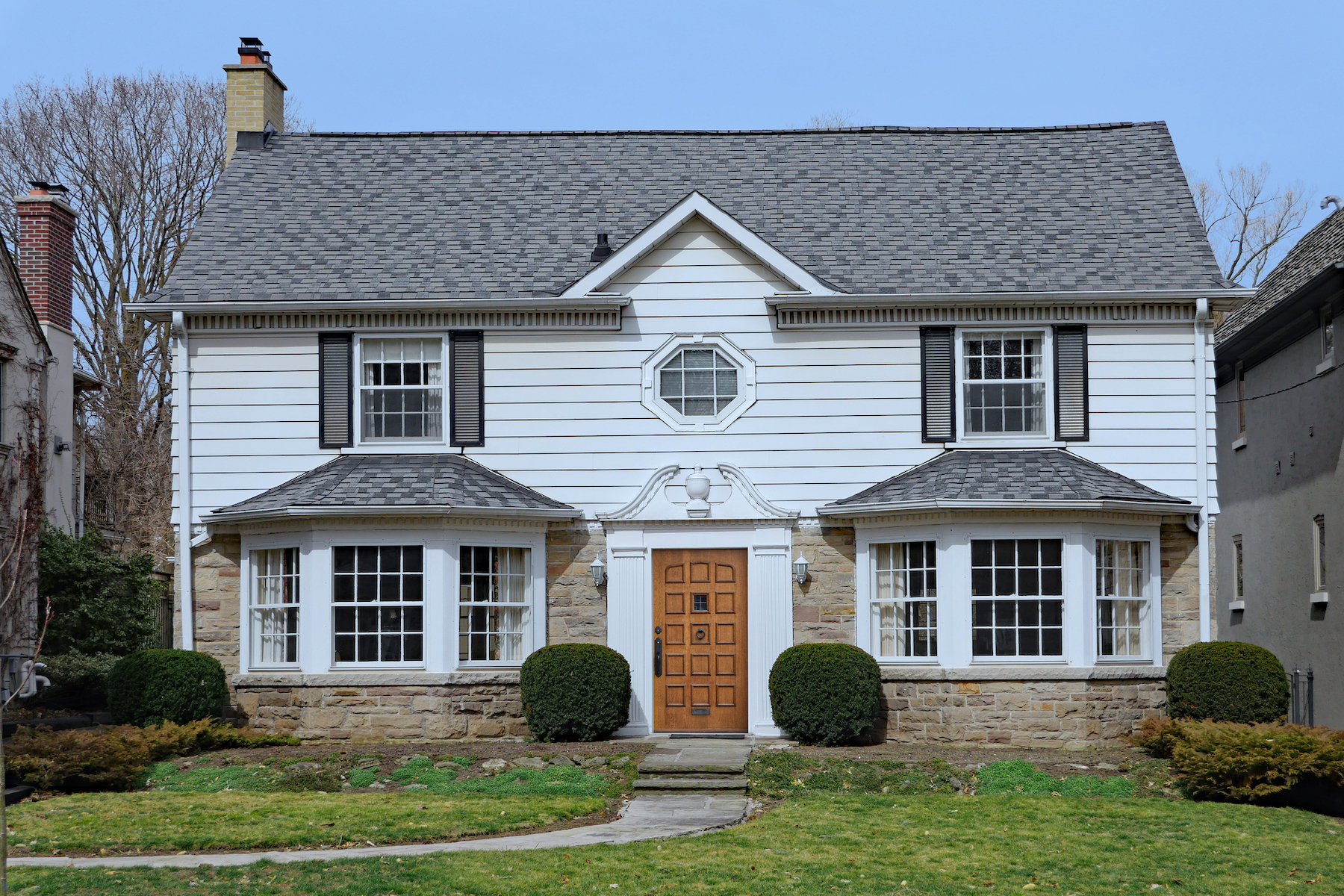Your siding is an important part of your home’s exterior – not only does it offer protection from the elements, but it can also enhance the aesthetics of your home. Understanding siding 101 can help you make the right decisions for your home.
Our team at Rusco is here to help you learn everything you need to know about siding to keep your home safe and beautiful for years to come.
- What Is Exterior Siding?
- Siding Types
- Siding Styles
- Choosing Your Siding
- How to Maintain Siding
- Siding Benefits
With over 87 years of experience, trust the experts at Rusco for all your siding needs.
Siding 101: What Is Exterior Siding?
Many people overlook the siding of the house, but it actually plays an integral part in your home’s exterior. The siding on the house refers to the protective outer layer of your home. While its primary function is to protect your home from the elements, including dirt, insects, moisture, and more, it also provides an added layer of insulation for your home.
However, siding panels don’t just protect your home – they also offer aesthetic enhancement and curb appeal. Choosing the right panels for your exterior siding, whether you use vinyl, metal, wood, or a composite, can give your home the look and feel you’ve always wanted.
7 Types of Siding
There are various colors and styles from numerous materials of siding to choose from for your home. Each comes with its distinct advantages, which is why we’re here to break down what to know about siding materials and how they can protect your home.The first step in learning about siding 101 is understanding these types and materials to determine how to start choosing which is right for you.
Discover more expert tips to choose siding that’s right for you.
Vinyl Siding
One of the most common types of siding is vinyl siding. Vinyl is often the most affordable option for many homeowners, and is relatively maintenance free. Homeowners in varying climates often choose vinyl siding because the PVC material protects against both hot and cold weather.
It also comes in a wide variety of color and texture options, ensuring that almost any homeowner can find the right aesthetic for their needs.
Fiber Cement Siding
Fiber cement siding provides some of the best durability on the market. Manufacturers generally create it from a composite of multiple other materials, making it a great option to withstand intense weather conditions without warping or deteriorating. It’s also resistant to fire, mold, and pests, ensuring you don’t have to worry about repairing your home.
Fiber cement siding also comes in a variety of styles and finishes. This way, you can ensure your home stays protected while still obtaining the look and feel you want.
Composite Siding
Composite siding is made up of multiple materials to create a durable and long-standing protective layer for the exterior of your home. This durability means it won’t warp, fade, or peel like another siding might over many years.
It can also mimic the natural look of stone, wood, or other options.
Brick and Stone Veneer Siding
Brick and stone veneer siding offers a timeless appeal to many homes. This type of siding doesn’t require much maintenance either, providing a long lifespan compared to many other types of siding. While brick and stone veneer generally comes at a higher cost than other siding options, it’s unmatched when it comes to an elegant and classic look for your home.
Metal Siding
Metal siding gives your home a modern look. Popular metals for siding include aluminum and steel, and it offers a durable option that provides resistance to fire, pests, and extreme weather. However, it’s important to install the right kind of metal siding, as the wrong material can cause dents or corrosion, or improper installation can lead to these issues.
Stucco Siding
Stucco siding has been around for thousands of years. Consisting of cement, sand, lime, and water, it offers a fantastically durable option for homes, especially those in warmer, arid climates, such as the Southwest of the United States. However, homeowners in other regions can still find it a great and energy-efficient option, as long as they install it properly to prevent cracking.

Wood Siding
This kind of siding can come in vertical or horizontal wood siding options, and its natural beauty is unmatched. While it requires more maintenance than other siding materials, it’s environmentally friendly and offers a lot of versatility in terms of style.
6 Common Siding Styles
Next up on siding 101 is understanding the most common siding styles. Different styles will drastically change the look and feel of your home’s exterior, regardless of what material you choose.
The six most common siding styles for homes include:
- Traditional Lap Siding: Horizontal lap siding is generally the most popular option for homeowners, and it simply refers to any horizontal siding that is installed on your home.
- Panel Siding: Panel siding exterior options refer to long, wide sheets of paneling. Designers often pair this kind of overlap siding with other styles to create a cohesive look.
- Board and Batten Siding: This style of siding consists of thin strips of wood – battens – that are installed over vertical strips of paneling to create a “farmhouse” aesthetic.
- Shingle Siding: Shingle siding is also a very popular choice for homeowners, and it consists of individual panels of siding that are overlaid over each other. Manufacturers typically make them from fiber cement or wood.
- Tongue and Groove Siding: This style of siding utilizes tongue and groove patterns to create a tight seal over the home. This way, your home stays protected from water damage and other elements.
- Shake Siding Vinyl: Houses with siding and shakes simply refer to thicker shingles, which offer a more rustic appearance for many homes. Manufacturers generally make these shingles from wood, vinyl, or cement.

Siding 101: How to Choosing the Right Siding
Choosing the right siding for your home is important to protect your house and avoid unnecessary maintenance. No matter if you’re looking for house siding to cover trim, gable end siding, or more, here are a few things to first consider:
Climate Considerations
The local climate plays a huge role in what siding you should pick for your home. For example, if you live in a humid, stormy area, it’s important to find siding that helps protect your home from moisture and intense weather, such as vinyl or fiber cement.
If you live in the Midwest and need help determining what siding is best for your home, Rusco is here to help you upgrade your siding and protect your home from the elements.
Aesthetic Preferences
It’s also important to consider the aesthetics you want for your home. For example, if you want a traditional, rustic look, metal siding probably isn’t your best option. The siding of your home can drastically change its curb appeal, and different design preferences, such as scalloped siding or horizontal siding types, can make or break what you want for your home’s aesthetic.
Budget and Longevity
Lastly, it’s important to consider your budget and the longevity of your home. If you’re planning to stay in your home for the rest of your life, investing in a highly durable siding can save you money in the long run. However, if you need to replace your siding and plan to move in a few years, you should ensure your home stays protected without overspending.

How to Maintain Your Siding
Before looking to replace your siding entirely, knowing how to maintain your siding can save you money and time in the long run. Conducting regular upkeep helps prolong the life of your siding and maintain its appearance as well. Here are a few tips on how to maintain your siding:
- Regular Cleaning: Make sure you regularly clean your siding. You can do this with a pressure washer, a hose, or even just a soft-bristled brush and some warm water and dish soap.
- Inspections and Repairs: Inspecting your home’s siding a few times a year can help you spot problems before they become a bigger issue, leading to increased longevity.
- Protecting Against Weather Damage: Painting and sealing your home’s siding will keep it protected from the elements. It’s generally a good idea to re-seal your home’s exterior every five to seven years.
Benefits of Upgrading Your Siding
There are many benefits to upgrading your home’s siding, both functionally and aesthetically. These include:
Improved Energy Efficiency
Newer, high-quality siding can enhance your home’s insulation and energy efficiency, which can lead to lower heating and cooling costs. Fiber cement, insulated vinyl, and composite siding all provide excellent energy efficiency, all without compromising on aesthetics.
Enhanced Curb Appeal
Older siding is often worn, faded, or cracked, which leads to an unattractive exterior and first impression of your home. Investing in upgraded siding can make it more attractive to guests, passersby, and even potential buyers.
Increased Home Value
New siding also drastically improves your home’s value. Not only does it make it more appealing to new buyers, but you can also show that a long-term investment in energy-efficient, aesthetic siding will help the new owners save money as well.
Contact Rusco For a FREE Siding Consultation
Now that you have a full understanding of siding 101 you can start dreaming of ways to renovate your home and give it a new, aesthetic look. For all your siding needs, trust the professionals at Rusco. Our team is here to ensure that your home stays protected for years to come, starting with your home’s siding. We offer plenty of durable materials that will withstand the test of time, and all of our professionally installed options are beautiful as well.
We’ve served the Chicagoland area for decades, so we’re adept at navigating siding, windows, doors, and more. Get in touch with us today for a free quote and learn more about how we can best serve your needs.







